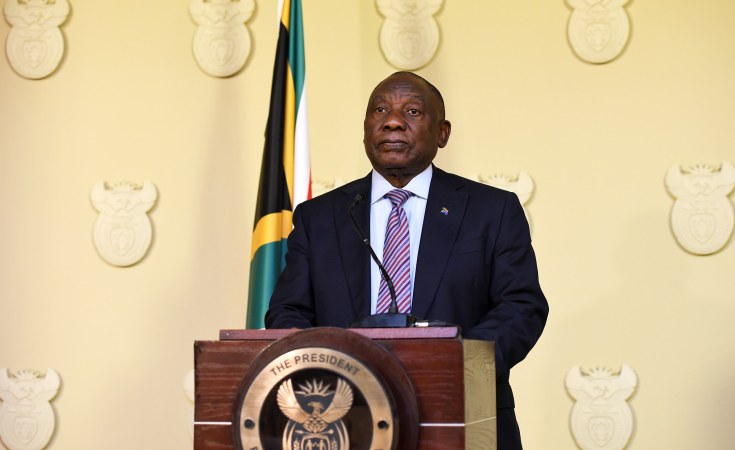Ranga Mataire — South Africans go the polls today in an election that observers say is the most vital general election since the end of apartheid in 1994.
South Africans today are voting in the national and provincial elections. South Africa has a different electoral system to Zimbabwe. Here is how it works:
Electoral System
According to the Electoral Commission of South Africa, members of the National Legislature (National Assembly) and the nine provincial legislators are elected based on a party-list, compensatory proportional representation system (PR) system.
This means that political parties are represented in proportion to their electoral support.
The signing into law of the Electoral Amendment Bill by President Cyril Ramaphosa on April 17, 2023 expanded the electoral participation and widens the pool of leadership choices for national and provincial elections.
The New Act entails that independent candidates are now accommodated within the system.
In terms of the Electoral Amendment Act, the two-tier multi-member compensatory proportional system is preserved, so there is no change to South Africa's electoral system.
The South African National Assembly is made up of 400 seats and these are the ones that will get elected by voters as has been the democratic tradition every five years since the end of apartheid in 1994.
Two-hundred seats are reserved for the National list (to be contested by political parties) with the remaining other 200 seats being divided up among nine regions (contested by parties and independent candidates).
Regions share the same geographical boundaries as provinces with number of seats reserved for each region being different as determined by the Electoral Commission before every national or provincial elections, taking into account the number of voters per region.
In basic terms, each political party is allocated a number of seats in the National Assembly relative to the number of voters it gets.
In the last election of 2019, the ANC had 57,5 percent of vote, which translated to 230 seats.
Voting process
Polling stations open today at 5am.
Voters will get three separate ballots. The first ballot is national and has a list of political parties contesting for 200 seats in the National Assembly. The second one is a "province-to-national" ballot that include political parties and independent candidates seeking to stand in each of South Africa's nine provinces in the National Assembly.
Legislators elected with this second ballot will take up the other 200 seats in the assembly with each province allocated a number of seats in accordance with the size of its population.
The third ballot is for voting for members of the provincial legislature in each province and will also include political parties and independent candidates.
Every South African citizen who is 18 or older may vote, including those resident outside South Africa. However, in elections of provincial legislature or municipal council, only those resident within the province or municipality may vote.
All elections are conducted by the Electoral Commission of South Africa, a body established by that country's constitution.
Eligible voters
The South African Independent Electoral Commission says over 27,79 million voters, the highest since the dawn of democracy in South Africa, are eligible to cast their votes in 2024 National and Provincial Elections.
In the last election, 26,74 million people voted. South Africa's population is around 62 million.
The turnout, however, has over the years been on a downward trend. In 2019, 66 percent of registered voters cast their ballots, down from 73 percent in 2014 of the previous year.
Each voter is allotted a voting district based on the voter's residence at the time they registered to vote. Each voting district is distinctively linked with a single voting station.
Voters who are outside their registered district on election day may vote at another polling station, but this calls for support additional paper work.
In essence, voting district bear no importance outside of the election process, and district boundaries are mapped for reasons of proficiently organising and managing elections.
The mapping of urban and rural districts is different in accordance with the population density. Urban voting districts are mapped to have a population of around 3 000 within a radius of 7,5 kilometres and rural voting districts are drawn to have a population of around 1 200 within radius of 10 kilometres.
The last election had 22 933 voting districts nationwide. The boundaries are set by the Electoral Commission's Delimitation Directorate, and are revised and attuned before each election.
Main candidates
Seventy political parties and 11 independent candidates are taking part in the national and provincial elections. The ruling ANC party is up against the Democratic Alliance (DA) led by John Henry Steenhuisen, the Economic Freedom Fighters (EFF) led by Julius Malema, and the uMkhonto weSizwe party led by disqualified candidate, former president Jacob Zuma.
Results
Announcement of results may start within hours after the close of voting, but the national outlook of results will be announced in later days, but within seven days after end of voting.
What happens next?
The South African constitution states that the National Assembly must hold its first sitting within 14 days after the announcement of election results.
At its first seating, the National Assembly will vote to elect one of its members to become the President of the country. If no candidate garners 50 percent or more in the first round, the presiding officer(s) call for more rounds of voting.
If no political party has a majority in the National Assembly, two or more parties will have to team up to get the votes necessary to elect the President.
This has never occurred previously as the ruling ANC has always secured an outright majority since 1994.
Overall, the South African electoral system is designed to provide fair representation to political parties based on their level of electoral support, allowing for a diverse and inclusive political landscape.


